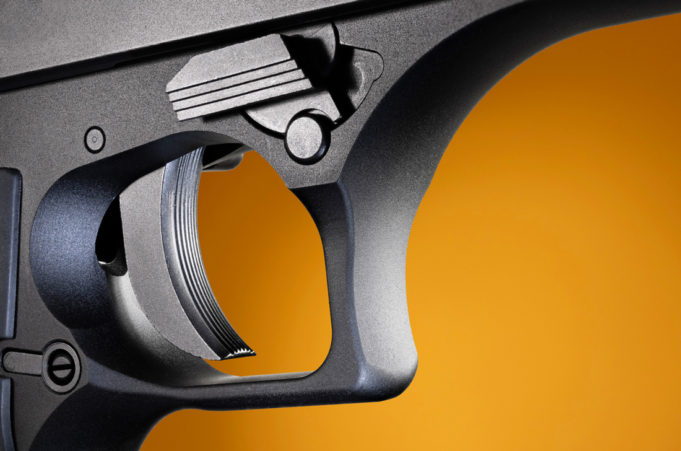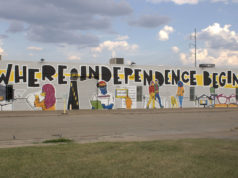What Do I Know?
I’ve been teaching for 10 years, all in a secondary setting (middle and high school), and I’ve been a gun enthusiast for around 23. I feel at least elementally qualified to tackle the subject of how legislators and we as Americans — because other countries don’t really have this problem — can make schools at large safer from guns in our culture. I use the word culture quite purposefully, because guns are an integral part of ours. I was given my first firearm at 9-years-old, a semiautomatic .22 caliber Ruger rifle with a 10-round detachable magazine, composite stock, and black oxide barrel. It was cool, almost even AR-ish, in appearance. My dad and I would take it to the range and shoot target practice — those are great memories of my late pops that I still cherish. Since then, I’ve always been around firearms in various capacities and used them for sport like IDPA (defensive pistol matches) or clay shooting. Always a city kid, I never gravitated toward hunting, but for the duration of living on my own, I’ve possessed some manner of defensive firearm, be it a non-hunting shotgun or magazine-fed handgun. As a teacher, I never took the time to receive a concealed-carry permit (when that sort of thing was necessary, because it isn’t anymore) because I spent the majority of my time in gun-free zones. I tell you these things not to establish that I’m the be-all-end-all of gun knowledge but that I probably represent the vast majority of American gun owners: practical enthusiasts who enjoy their firearms for a sporting purpose and see utility in their self-defense capacity.
Recent(ish) Measures
I came of age in the 1990s during the Clinton era assault-weapons ban. Political pressure for that ban came partially from an elementary school shooting in California in 1989, in which the assailant used a Kalashnikov-style (“AK” in common vernacular) rifle to kill five children and wound 32 others. Similar shootings during the early ’90s inspired a 10-year ban on the production and import of weapons like Kalashnikov and Armalite (AR) rifles and high-capacity (anything more than 10 rounds) magazines. Data surrounding that time period show that the ban had little effect on firearm homicides or criminal activity, but mass shootings — as defined by four firearm homicides occurring in one incident or several in a small area — did decrease. Since the ban expired in 2004, mass shootings have increased. The previously prohibited weapon types grew exponentially. The original civilian “black rifle” was introduced in the 1950s. Most consumers at the time weren’t very interested. They didn’t see the utility. Up until the 1994 assault-weapons ban, estimates are that about 400,000 rifles of AR-type specifically circulated among Americans. Since the ban’s expiration in 2004, current estimates are that around 20 million are owned. Never underestimate the allure of something that’s suddenly legal.
The Gun Control We Accept
Almost nothing will create an internet firestorm like the mention of those two words — gun control — short maybe of comparing someone to Hitler or a group to Nazis. But it’s important to acknowledge that gun control has and continues to exist. Explosives, select-fire weapons (anything more than semiautomatic), and large caliber weapons (think .50 caliber machine guns mounted on tanks) are not legal to be owned by anyone outside of law enforcement or the military. This does not include weapons manufactured and legally owned before May 19, 1989, which are “grandfathered” in and considered legal as long as the owner completes several registration steps, pays extra tax, and retains approval to keep such weapons from the U.S. Bureau of Alcohol, Tobacco, Firearms, and Explosives.
Surprisingly, this isn’t a small number. Nearly 750,000 are owned per 2020 registration numbers, but they’re tightly regulated and extremely valuable. The owner of one of these weapons could sell and transfer the registration (if approved) for 15-20 times what a similar firearm would be sold to police or military for. It could be argued that while everything in this section could fall under the Second Amendment clause of establishing a well-regulated militia, it has been accepted for some time. There’s a reason you don’t read stories about these weapons being used in crimes or mass shootings. They’re kept by extremely responsible owners and are difficult and time-consuming to acquire.
Baby Steps
The most effective piece of the assault-weapons ban legislation, in my opinion, was the limitation on high-capacity magazines. Whether we agree or not, military-style rifles are part of our lives now, and there are too many for any sort of ban to be practical or even effective. Though prohibition on future sales and manufacturing would create an incredible market for those who possess them already and are looking to make a great deal of money in the resale market, the existing supply, though large, would become instantaneously much more valuable. Guns are dangerous when used nefariously, and the primary difference between assault weapons and sporting rifles are their magazine capacities. Hunting rifles can use even larger caliber bullets fired at even greater velocities, but they’re not as effortless to maneuver and traditional hunting rifles don’t use detachable magazines (though many are now crafted to look more like assault weapons and do). Handguns, statistically, are still used for the vast majority of gun crimes, and high-capacity magazines exist for them also. Curtailing the manufacture and sale of magazines larger than 10 bullets is a nominal step but one that could probably lean in a positive direction of compromise between gun-confiscation alarmists and firearm-abolition proponents who for the last decade have held no middle ground.
Arm the Teachers
Many are championing the idea of teachers carrying, and some districts already allow this. The notion shouldn’t be looked down on. All ideas are welcome right now for a problem that isn’t getting any better. There are many retired military members who teach, and many former police officers and gun enthusiasts who are proficient with firearms also helm classrooms. But how to introduce that into a school setting is messy both from a legal and practical standpoint. Federal law, right now, deems that schools are gun-free zones (outside of peace officers). Texas law does give individual districts the freedom to designate teachers to carry weapons. I can tell you for me it would not be practical. I’m a coach, meaning I spend at least half my school day in athletic clothes, and I’m outside being physical alongside my athletes. Guns don’t belong in drawers, lockers, or bags but on hips in holsters. It might be more practical for administrators or others to carry, but that would be a highly localized decision and carry extra liability in a profession that already demands plenty. I’m not saying it’s a terrible idea but a vastly more complicated one, practically, considering already existing laws.
Fortify the Schools
Ted Cruz has already hash-tagged this measure. The U.S. senator from Texas is a divisive guy, but he’s not wrong. Campuses could be harder targets. We could install fewer doors and add guard stations. But we are dealing with children — and a lot of them. North Texas is no stranger to mega-schools. Allen High School has more than 5,000 students. Those students are regularly in and out of the building for sports, arts, late arrival, lunch, early dismissal, and other activities. You’d be hard-pressed to walk around a high school in North Texas at lunchtime and not find a door that was propped open by a student for another. It’s not ideal. It’s just reality. We can do a better job utilizing existing security measures (of which there are many), and any school employee knows that it’s a constant and everyday task. Ask any police officer who deals with home invasions, and they’ll remind you that no target is impenetrable. You’re just trying to make it as uninviting as possible.
Politicians are all going to claim to have a magical solution to solving an unsolvable problem of stopping mass shootings, specifically as it pertains to schools, in the American gun culture. None of them are right, but none of them are wrong. First, we as a society have to admit that the current course isn’t working. The problem we’re facing, and will continue to face, will require something that few enjoy: committing to consistent sacrifice — of law-abiding adults — through trial and error to find better solutions for the country we’re building. It sucks for rule abiders to have to follow additional rules, but that’s generally how the law works. The bad actions of a few cause inconvenience for the many. There will be many solutions, and almost none of them will yield observable results in one election cycle. The absolute bare minimum that legislators can do right now is push for magazine-capacity restriction. If anyone needs scripture to inspire them to make this grave sacrifice, simply look to Corinthians: “When I was a child, I talked like a child, I thought like a child, I did active shooter drills like a child,” or something like that.
This column reflects the opinions of the author and not the Fort Worth Weekly. To submit a column, please email Editor Anthony Mariani at Anthony@FWWeekly.com. Columns will be gently edited for factuality, clarity, and concision.












